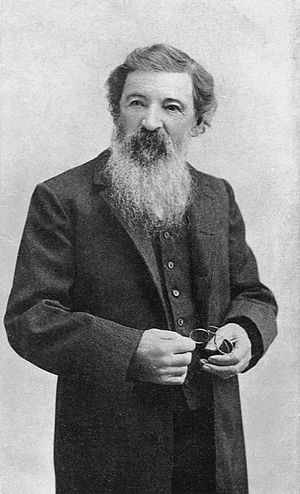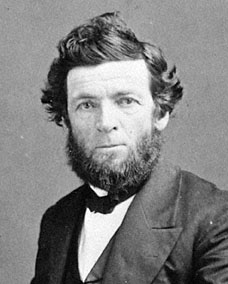Thomas Condon facts for kids
Quick facts for kids
Thomas Condon
|
|
|---|---|

Thomas Condon at age 80
|
|
| Born | 1822 Ballynafauna, near Fermoy, Ireland
|
| Died | 1907 (aged 84–85) near Eugene, Oregon, U.S.
|
| Resting place | Eugene Masonic Cemetery |
| Nationality | Irish |
| Citizenship | United States |
| Alma mater | Auburn Theological Seminary |
| Occupation | teacher, minister, geologist |
| Spouse(s) | Cornelia Holt |
| Children | 10 |
Thomas Condon (born 1822, died 1907) was an important person from Ireland. He was a minister, which is like a church leader. He was also a scientist who studied rocks and fossils. He became famous for his work in Oregon, a state in the U.S.
Contents
A Life of Discovery
Thomas Condon came to New York City from Ireland in 1833. He finished his studies to become a minister in 1852. After that, he traveled by ship all the way to Oregon.
Finding Fossils
Condon worked as a minister in a town called The Dalles. While there, he became very interested in the fossils he found. Fossils are the remains of ancient plants and animals. He discovered fossil seashells near the Crooked River. He also found fossils of camels and other animals along the John Day River.
Many of his amazing discoveries were made in what is now the John Day Fossil Beds National Monument. He shared his findings with famous scientists. These scientists included Spencer Baird from the Smithsonian. Condon sent his fossil specimens to big museums.
A Professor and Author
In 1872, Thomas Condon was chosen as Oregon's first official State Geologist. A geologist is a scientist who studies the Earth's rocks and history. He later left this job to become the first geology professor at the University of Oregon. Before that, he taught at Pacific University in Forest Grove.
In 1902, Condon wrote a book about geology called The Two Islands and What Came of Them. This book talked about Oregon's oldest rocks. These rocks are found in the Klamath Mountains and the Blue Mountains. The book tried to explain what was known about Oregon's geology. It also shared ideas about the state's ancient past.
Condon's Lasting Impact
Thomas Condon left a big mark on science and education in Oregon. Many places and things are named after him.
Places Named for Condon
- Condon Hall at the University of Oregon was named for him. It used to be where the geology department was located.
- The Thomas Condon Paleontology Center is at the John Day Fossil Beds National Monument. This center helps people learn about fossils.
- A temporary lake, Lake Condon, was named after him. This lake formed sometimes during the huge Missoula Floods.
- The Condon Fossil Collection is at the University of Oregon Museum of Natural and Cultural History. Thomas Condon started this collection in 1876.
- Condon Butte in Lane County is also named in his honor.
- The town of Condon, Oregon was named for Harvey C. Condon. Harvey was Thomas Condon's nephew.
Fossil Named for Condon
A fossil swan was once called Anser condoni. This name is now a synonym for the fossil swan Cygnus paloregonus.


